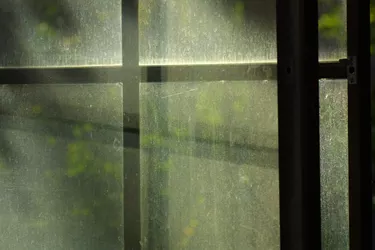
There are several different types of window well covers available at most home and garden stores, but these may not be the best option. For one thing, options are usually limited and the coverings can be expensive, ranging up to several hundred dollars depending on their configuration. Also, many window wells may be made to custom sizes which stores do not keep covers for, forcing customers to pay extra for custom designs. But if you have the right materials and tools, you may be able to take the inexpensive options and construct a covering of your own.
Purpose
Video of the Day
First, you need to consider why you want your window wells covered. Stores usually sell plastic covers that are designed primarily to keep water out, especially in case of storms or floods that can ruin basements if the water is left unchecked. If this is what you need a well covering for, then you will want to make or buy a covering similar to those. Plastic coverings also help minimize heat loss from basement areas, providing an extra layer of insulation for the heat that gradually seeps upward through the window.
Video of the Day
On the other hand, your primary concern may be debris and leaves blowing into the window covering and getting trapped there, in which case a much simpler style of window well covering is needed. Or you may be worried about children accidentally falling inside windows wells or getting trapped inside of them, which may lead you to a different window well design completely. Since you are making your own covering, you can tailor it to your needs.
Materials and Structure
Based on your needs, you have a number of material options. The best window well coverings you can make are Plexiglas, or a similar material, as long as you have the tools to cut it. Keep in mind these waterproofing coverings require both a top covering section and a base section for the covering to attach to, usually with rubberized edges that act as seals. These coverings usually lift upward toward the house in one piece, with the hinges grounded in the foundation where the house meets the ground. This will require significant drilling, framing, lining and expert caulking to bring the structure together.
Simpler coverings can be made out of wire stretched across a frame, or light plastic. The wire fencing can be used to keep out most debris and keep window wells safe for children and animals, while light plastic stretched on a hoop of pipe or wire can protect against rain at a moment's notice. If you are interested in aesthetics, then you may want to take more time and design a wood frame that can be painted or stained to match the landscape.